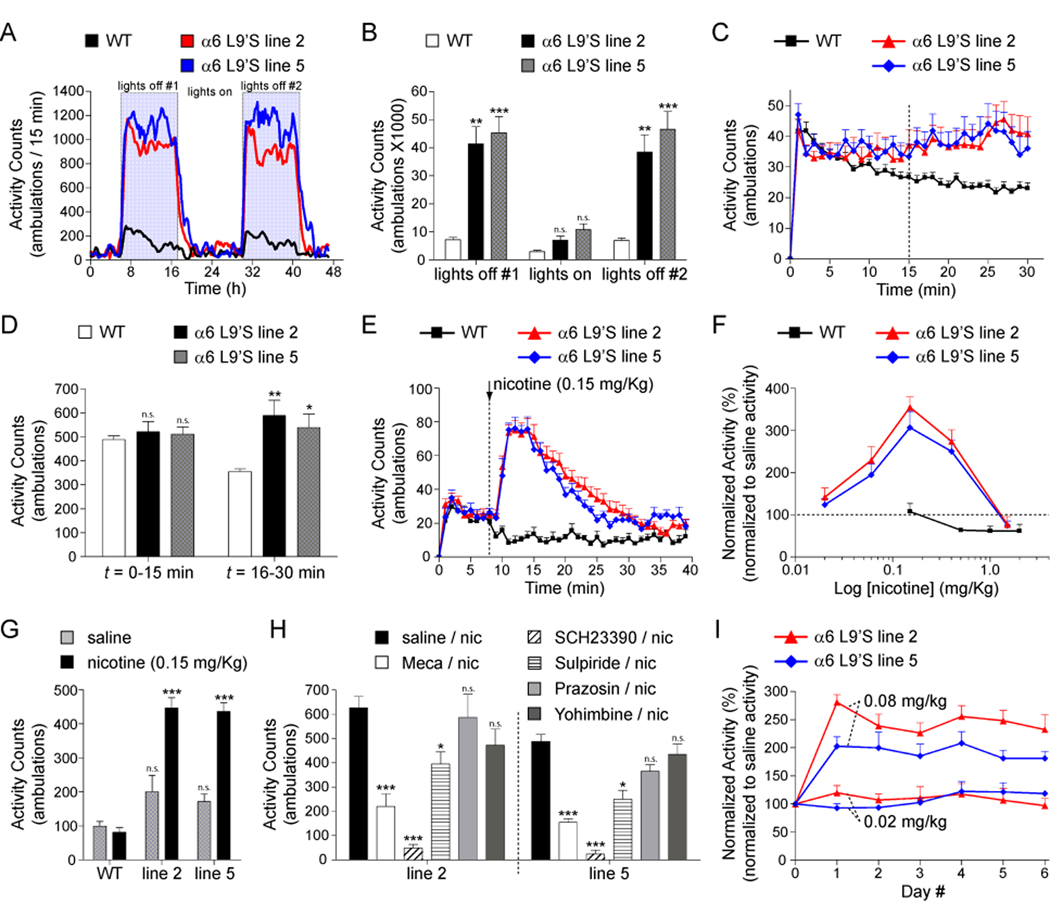Figure 1. α6L9’S mice are markedly hyperactive and hypersensitive to the psychomotor stimulant action of nicotine.
(A and B) α6L9’S mice are hyperactive in their home cage. Horizontal locomotor activity of mice (α6L9’S or WT cagemates) in their home cage environment was recorded during a 48 h period. Raw locomotor activity data (# ambulations / 15 min period) are reported (A). Total locomotor activity from “lights on” and “lights off” periods indicated in (A) are shown (B) for WT and α6L9’S mice.
(C and D) α6L9’S mice do not habituate to a novel environment. Mice (α6L9’S or WT cagemates) were removed from their home cage and immediately placed in a fresh cage. Locomotor activity was measured for 30 min. Raw locomotor activity data (# ambulations / min) are reported (C). Total locomotor activity from (C) for t = 0–15 min or t = 16–30 min is shown (D).
(E) Nicotine specifically stimulates locomotor activity in α6L9’S transgenic mice. After 8 min of baseline locomotor activity, mice (WT, α6L9’S line 2 and 5) were injected with 0.15 mg/kg, i.p. nicotine. Locomotor activity was recorded for an additional 30 min after injection. Raw locomotor activity data (# ambulations / min) are reported.
(F) Dose-response relationship for nicotine-stimulated locomotor activity in WT and α6L9’S mice. Mice were administered nicotine at the indicated dose, and total locomotor activity was measured as in (E). Locomotor activity for each mouse was normalized to a saline control injection for the same mouse. Data are expressed as the percentage of the response to saline (set to 100 %).
(G) Locomotor activity following saline or nicotine (0.15 mg/kg, i.p.) injection in WT and α6L9’S mice. Total raw locomotor activity data (# ambulations / min, 30 min total) are reported.
(H) Behavioral pharmacology of nicotine-stimulated locomotor activation in α6L9’S mice. Mice (WT or α6L9’S) were pre-injected with saline, mecamylamine (1 mg/kg, i.p.), SCH23390 (2 mg/kg, i.p.), sulpiride (20 mg/kg, i.p.), prazosin (1 mg/kg, i.p.), or yohimbine (1 mg/kg, i.p.) immediately prior to the start of data acquisition. Nicotine (0.15 mg/kg, i.p.) was injected a t = 8 min and locomotor activity was measured for an additional 30 min. Total raw locomotor activity data (# ambulations / min, 30 min total) are reported.
(I) Lack of sensitization or tolerance following repeated nicotine administration in α6L9’S mice. Groups of α6L9’S mice were injected with saline once daily for three consecutive days followed by nicotine (0.02 mg/kg, i.p. or 0.08 mg/kg, i.p.) once daily for six consecutive days. Locomotor activity was measured as in (E), and nicotine-stimulated locomotor activity for each mouse was normalized to saline control injections (average of three saline injections) for the same mouse. Data are expressed as the percentage of the response to saline (set to 100 %).
All data are expressed as mean ± SEM. *, p < 0.05; **, p < 0.01; ***, p < 0.001.

